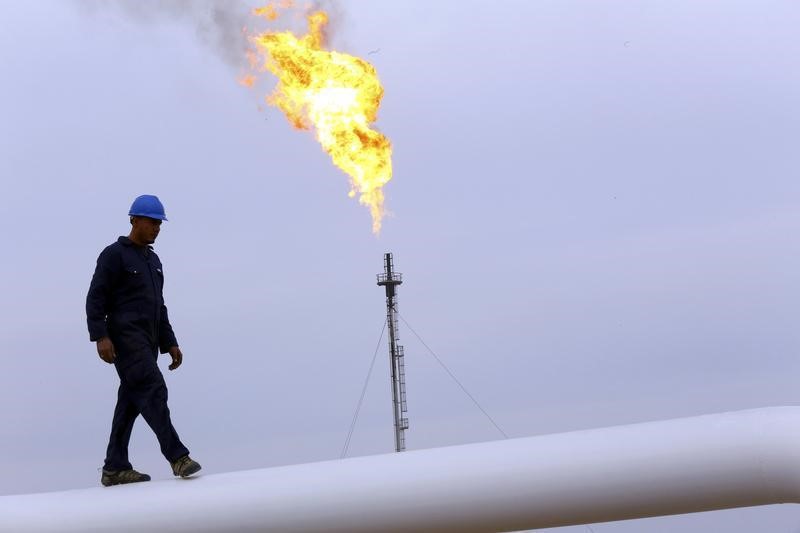Oil recoups last week’s loss on softer rate hike, stronger demand signals

LCO
-0.55%
Add to/Remove from Watchlist
Add to Watchlist
Add Position
Position added successfully to:
Please name your holdings portfolio
Type:
BUY
SELL
Date:
Amount:
Price
Point Value:
Leverage:
1:1
1:10
1:25
1:50
1:100
1:200
1:400
1:500
1:1000
Commission:
Create New Watchlist
Create
Create a new holdings portfolio
Add
Create
+ Add another position
Close
CL
-0.70%
Add to/Remove from Watchlist
Add to Watchlist
Add Position
Position added successfully to:
Please name your holdings portfolio
Type:
BUY
SELL
Date:
Amount:
Price
Point Value:
Leverage:
1:1
1:10
1:25
1:50
1:100
1:200
1:400
1:500
1:1000
Commission:
Create New Watchlist
Create
Create a new holdings portfolio
Add
Create
+ Add another position
Close
By Barani Krishnan
Investing.com — The softening inflation game in the United States is helping oil bulls out, though rising crude prices on their own might ultimately lead to higher inflation.
New York-traded WTI, or West Texas Intermediate, crude for February delivery settled up $1.47, or 1.9%, at $79.86 per barrel, after a session high at $79.93. The U.S. crude benchmark rose 8.4% on the week, completely erasing losses from a week ago.
London-traded Brent crude for March delivery settled up $1.25, or 1.5%, at $85.28, after an intraday peak at $85.34. For the week, the global crude benchmark gained 8.5%, making up for all of the previous week’s drop, like WTI.
Inflation, as indicated by the Consumer Price Index, or CPI, rose by 6.5% in the 12 months to December, the Labor Department said Thursday. It was the slowest annual advance for the CPI since October 2021 and indicated smaller rate hikes ahead by the Federal Reserve, which raised rates aggressively last year to curb price pressures.
Adding to the Labor Department data, the University of Michigan’s closely-watched survey of consumers said on Friday that year-ahead inflation expectations among Americans has fallen for a fourth straight month in January, dipping to 4.0% from 4.4% in December. It was the lowest reading for price pressures since April 2021, the survey said.
The lower inflation readings are bolstering expectations that the Federal Reserve will keep to smaller rate hikes this year that would greatly assist businesses in the country, after the aggressive increases last year that sent tremors across markets. Those expectations have bolstered risk appetite in most forms this week, including in oil.
The Fed raised interest rates seven times last year, adding 425 basis points to rates which prior to that peaked at just 25 basis points, in the aftermath of the coronavirus pandemic. The central bank shocked markets by executing four back-to-back hikes of 75 basis points from June through November, before resorting to a modest 50-basis point increase in December.
For its next rate decision on Feb. 1, economists expect the central bank to announce an even smaller hike of 25 basis points. The last time the Fed announced a 25 basis-point increase was in March 2022, at the start of its current rate hike cycle.
This week’s rebound in crude prices, coming after last week’s drop of more than 8% on both WTI and Brent that marked the worst annual debut in years for oil, could continue on the back of improving demand from China as the top energy importer tries to make a vigorous comeback from its own coronavirus crisis, some analysts said.
Others said recent bids for crude by European buyers could lead to renewed upward price pressure in commodities, with oil being a key driver of inflation.
“Energy traders are starting to price in a little bit more crude demand coming out of Europe and not just China,” said Ed Moya, analyst at online trading platform OANDA. “The oil market is looking like it will remain tight.”




